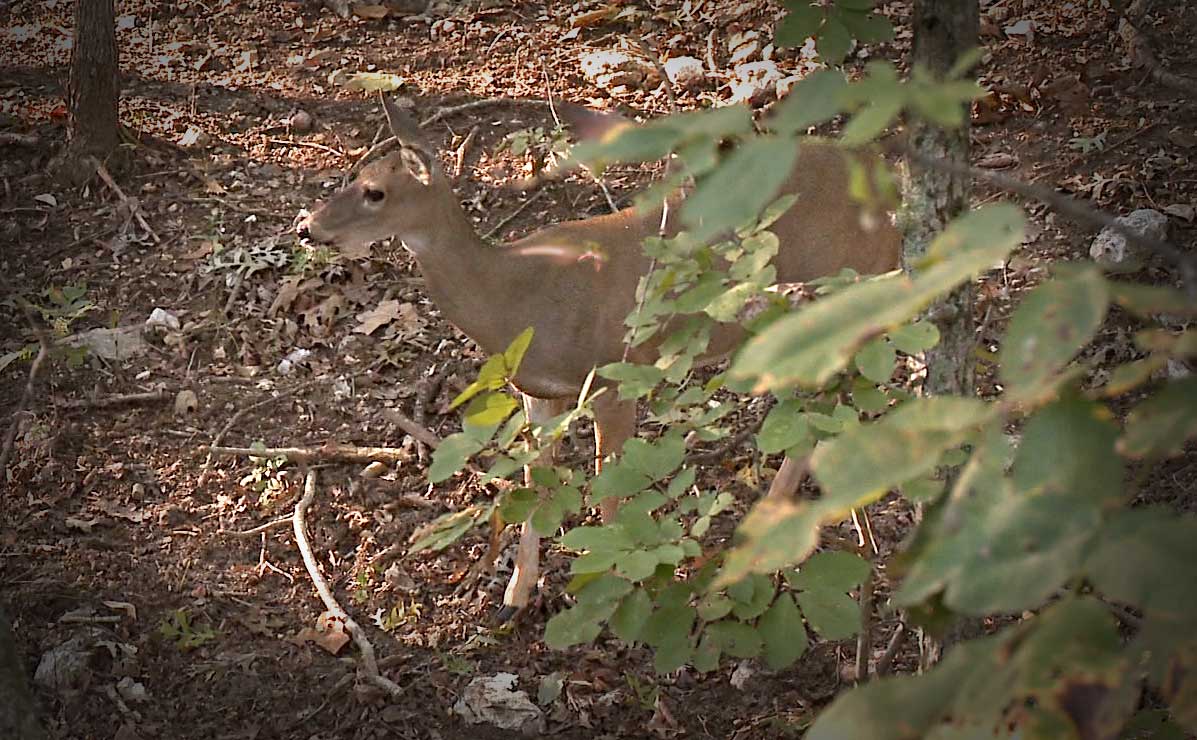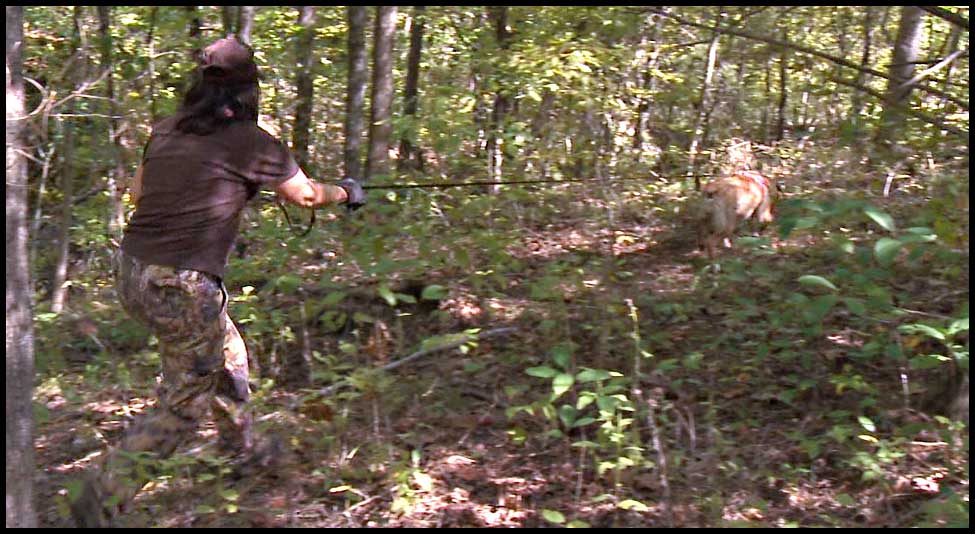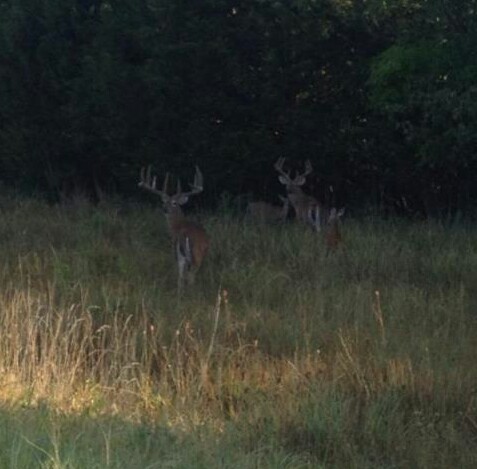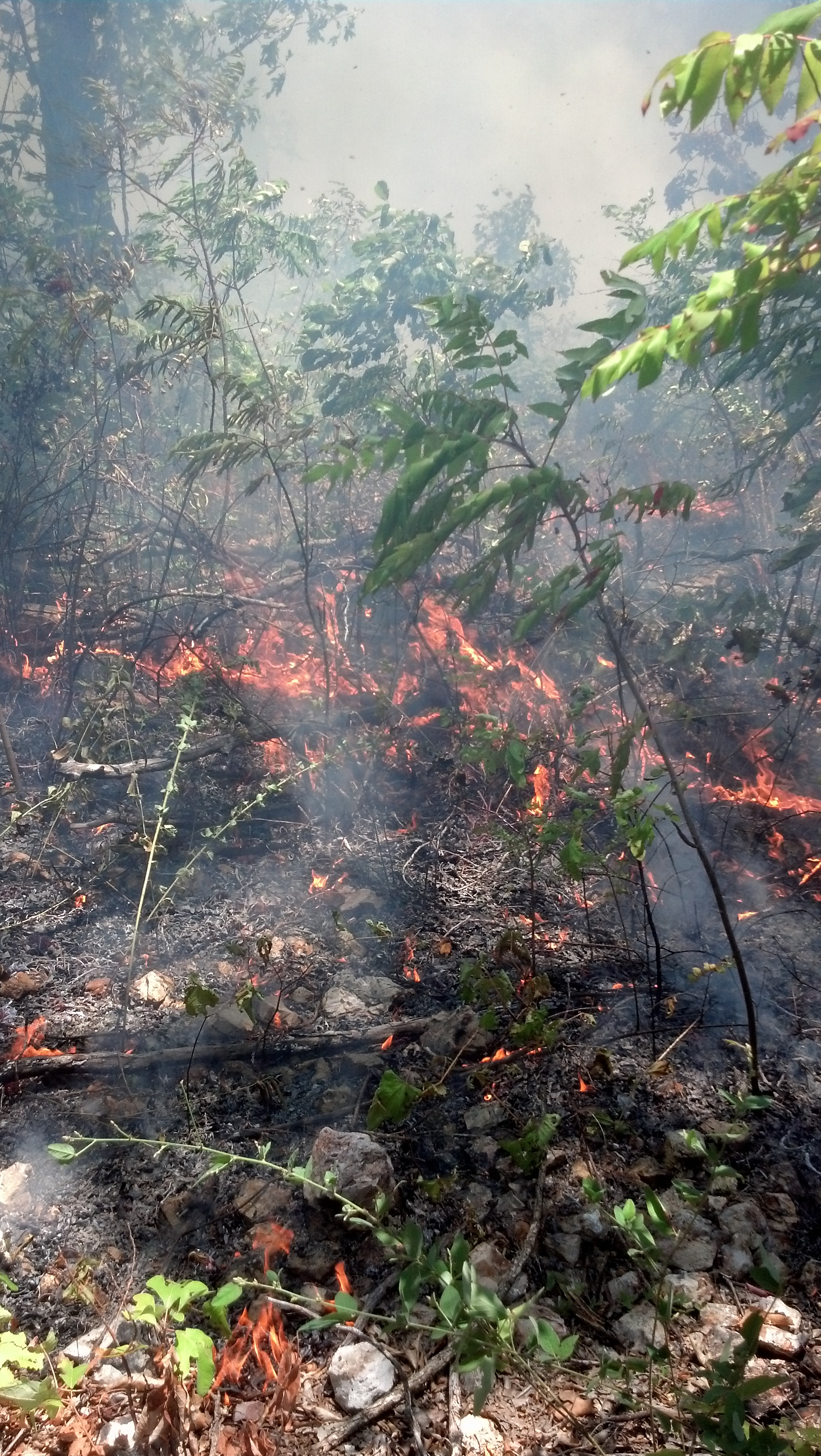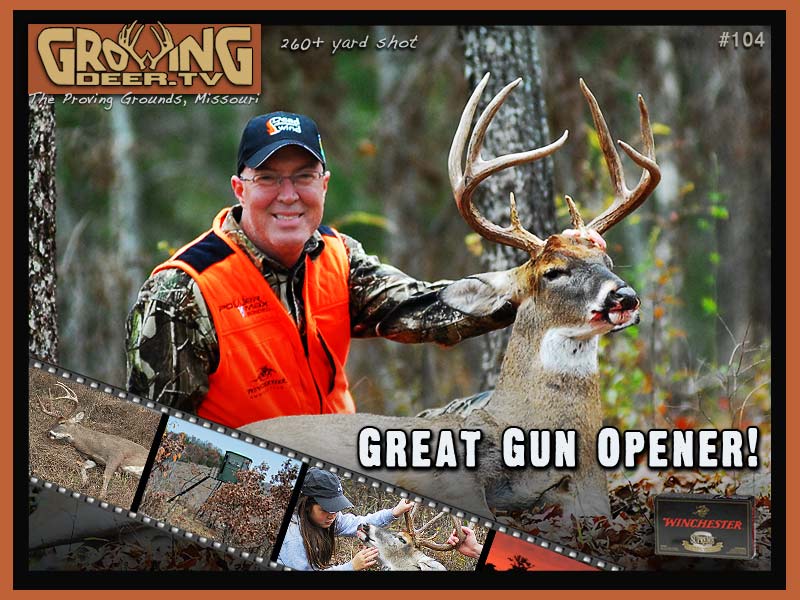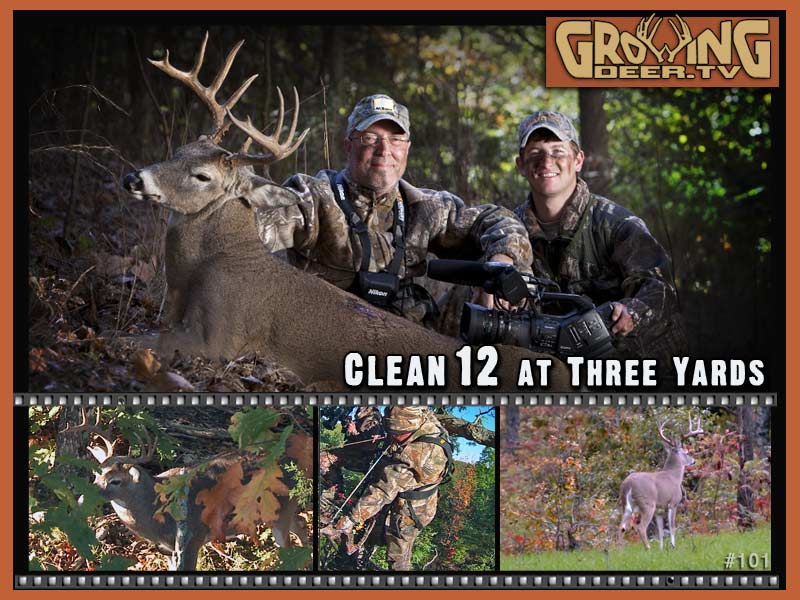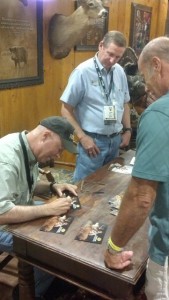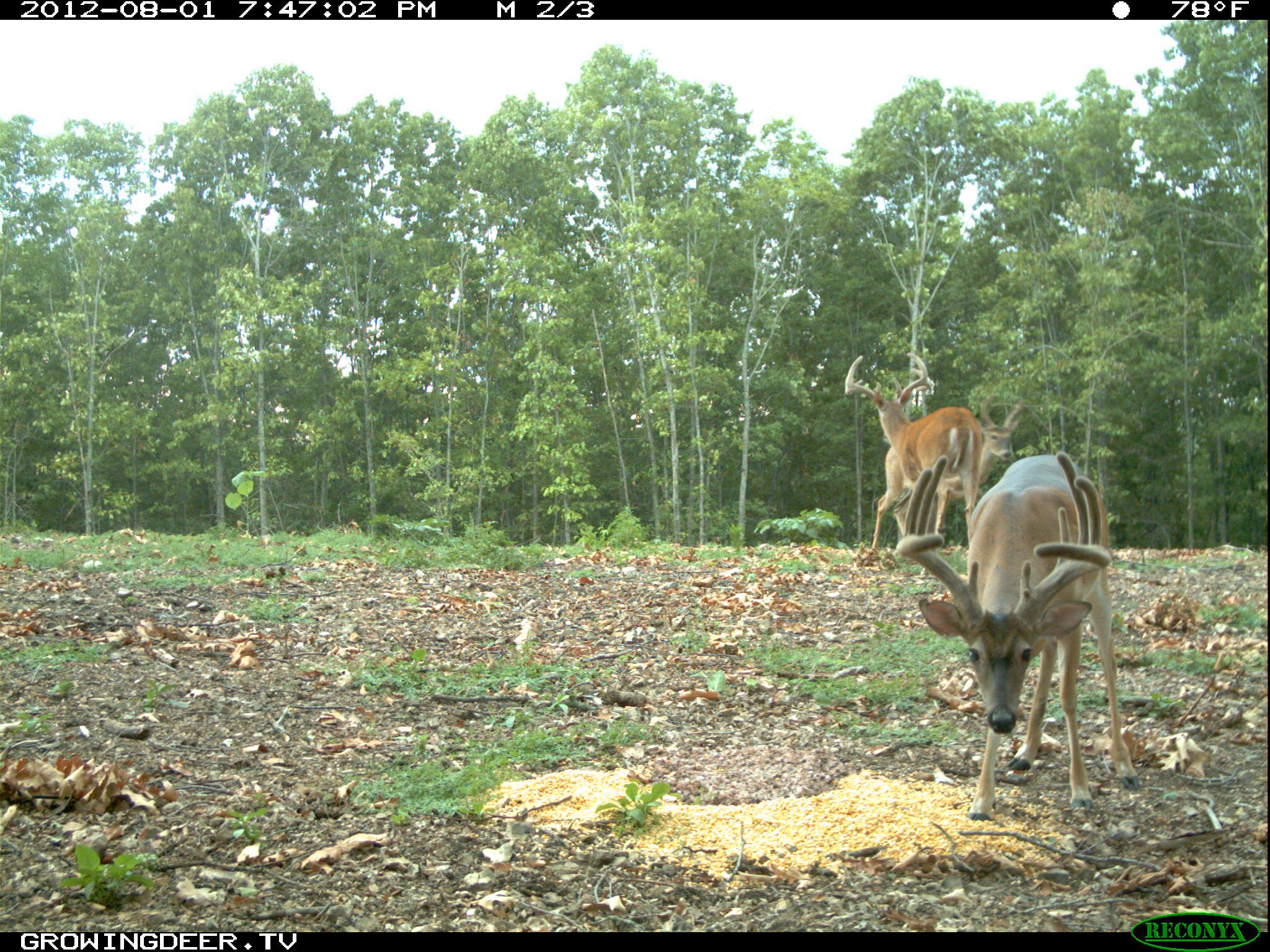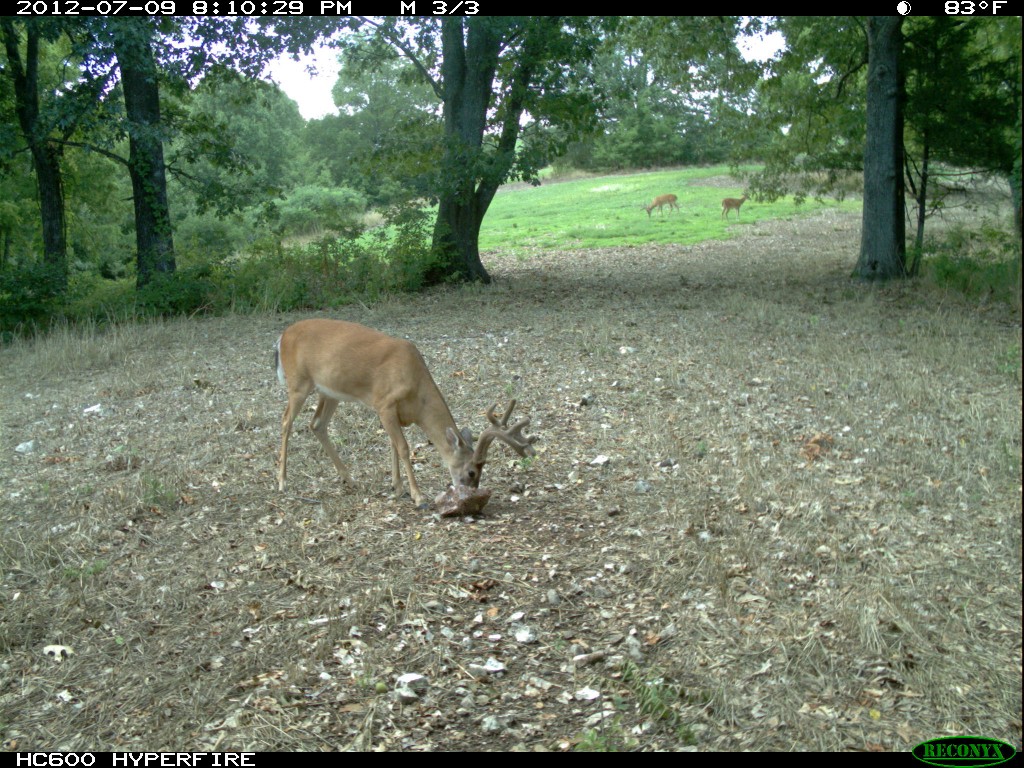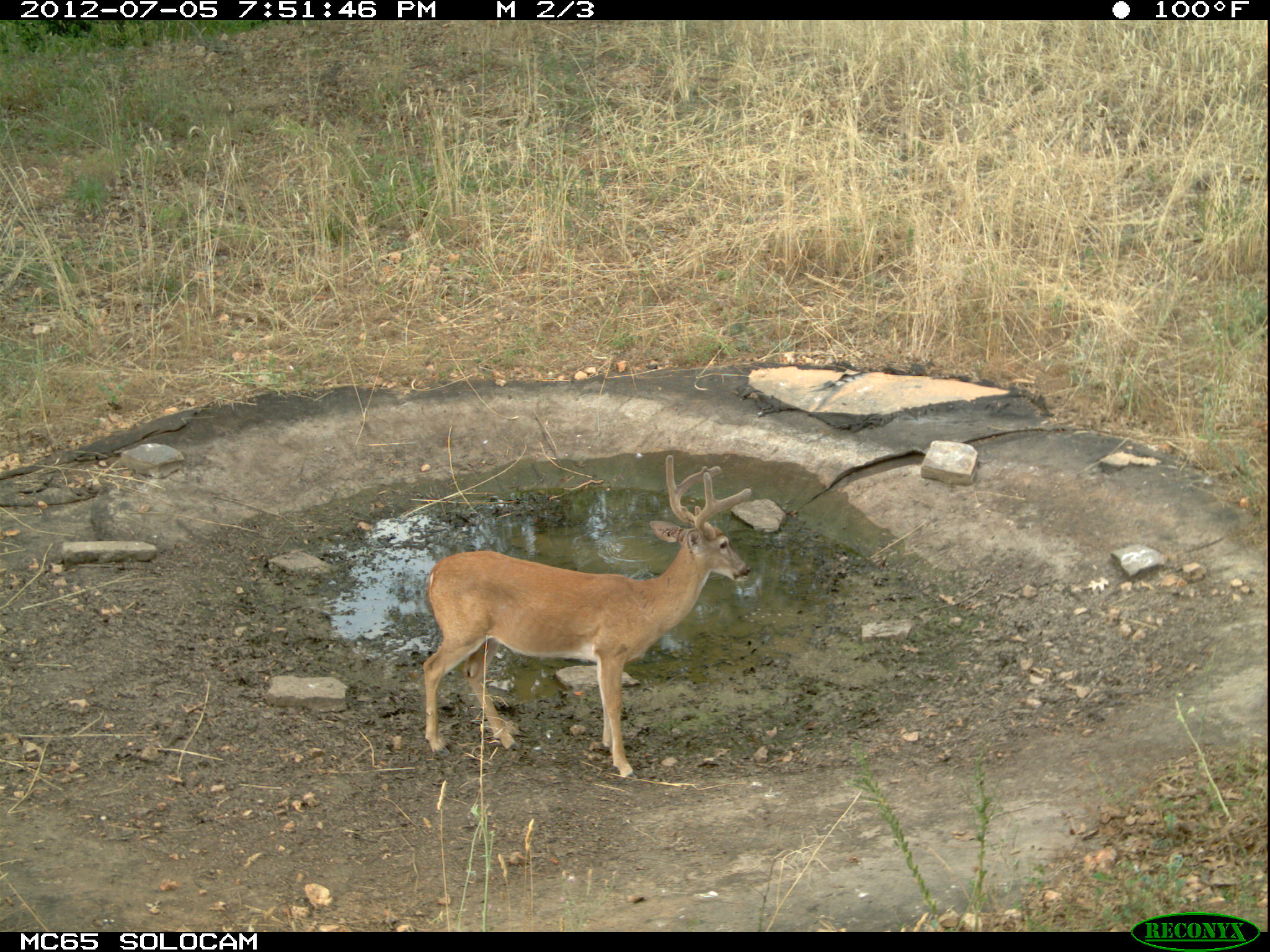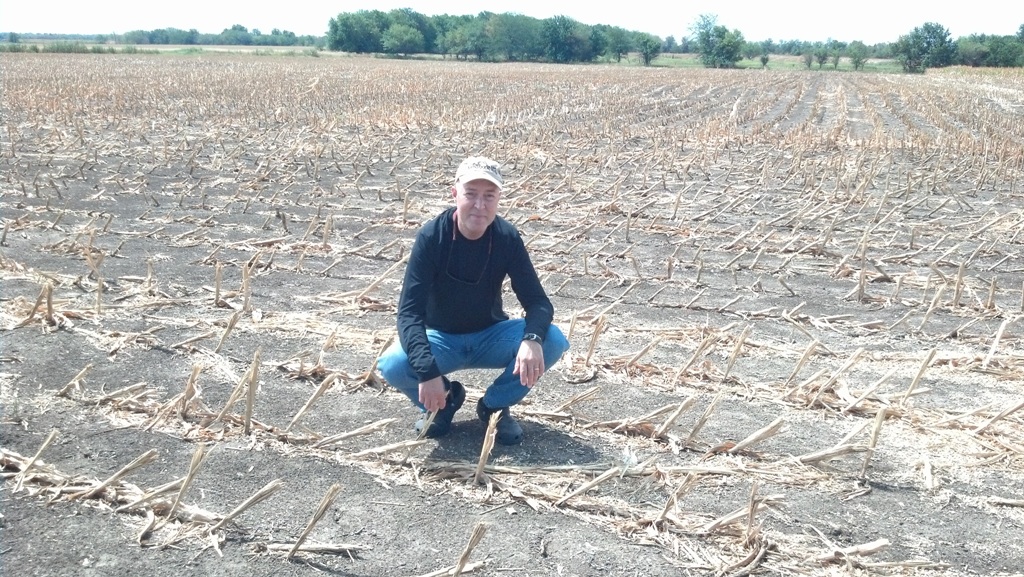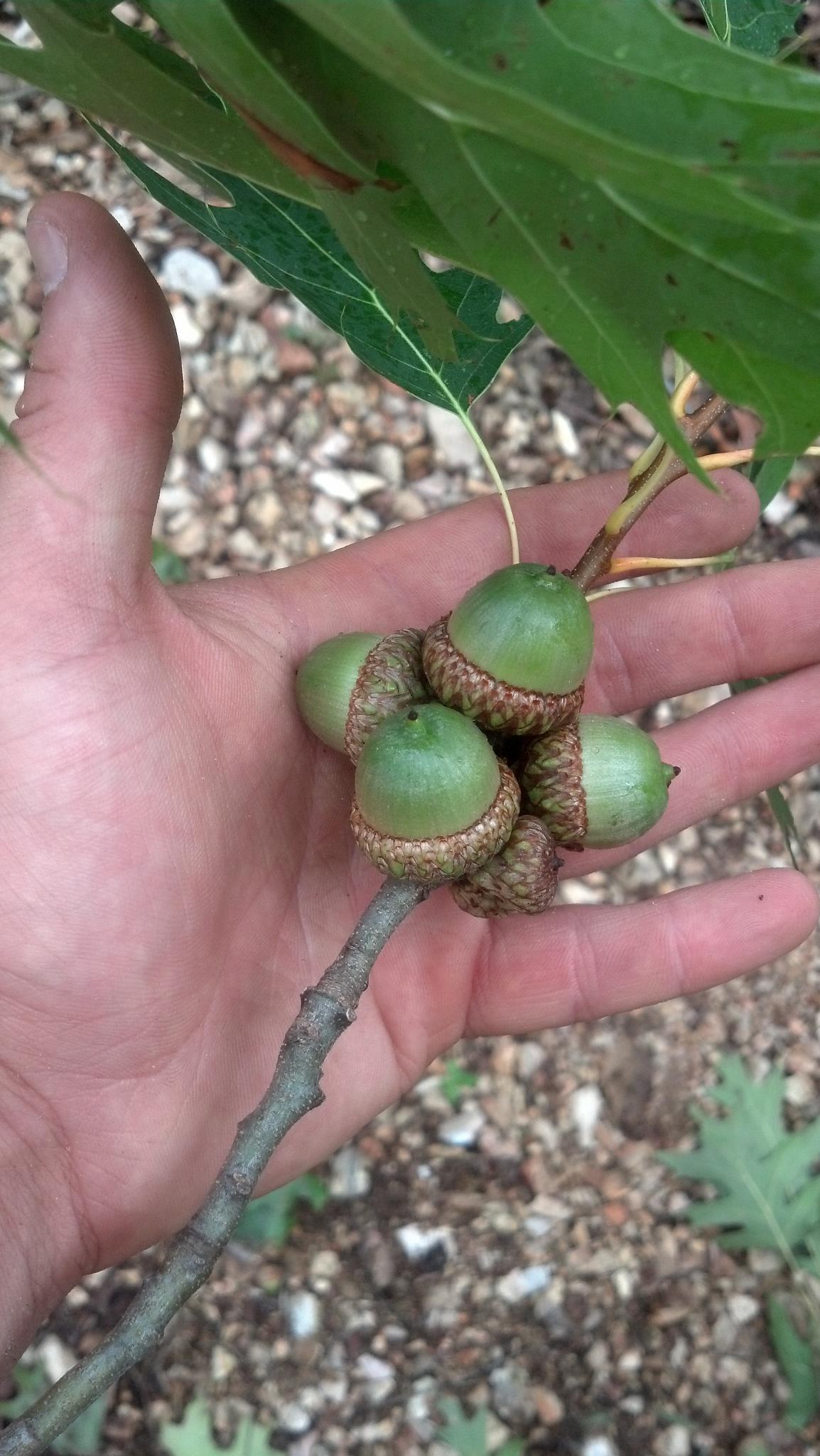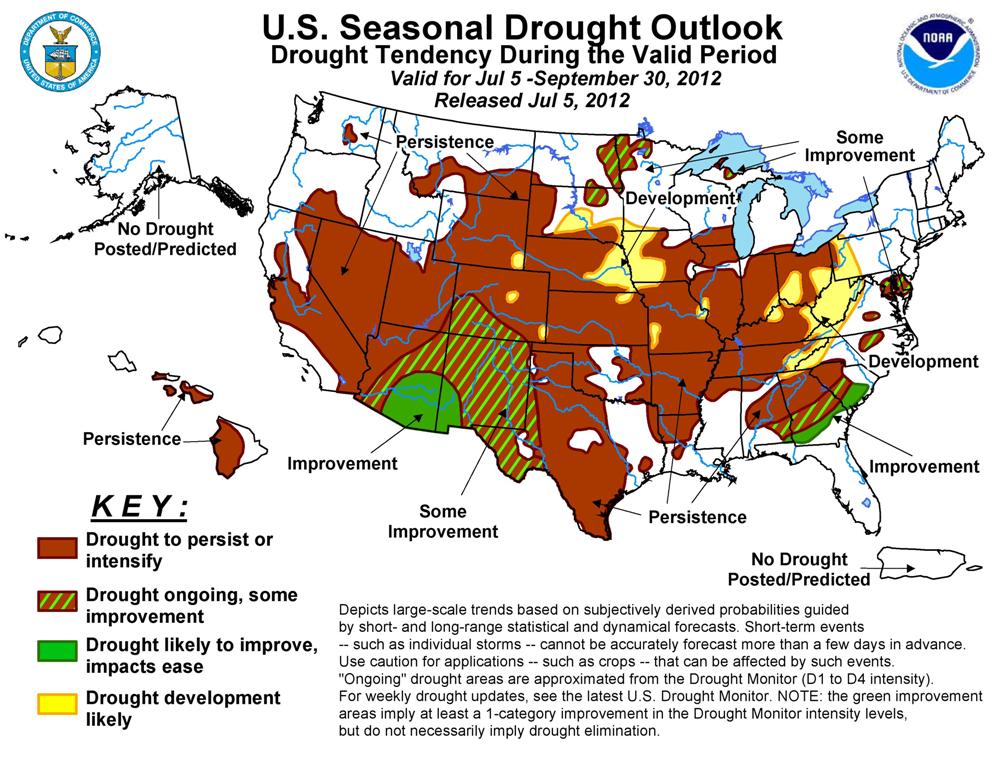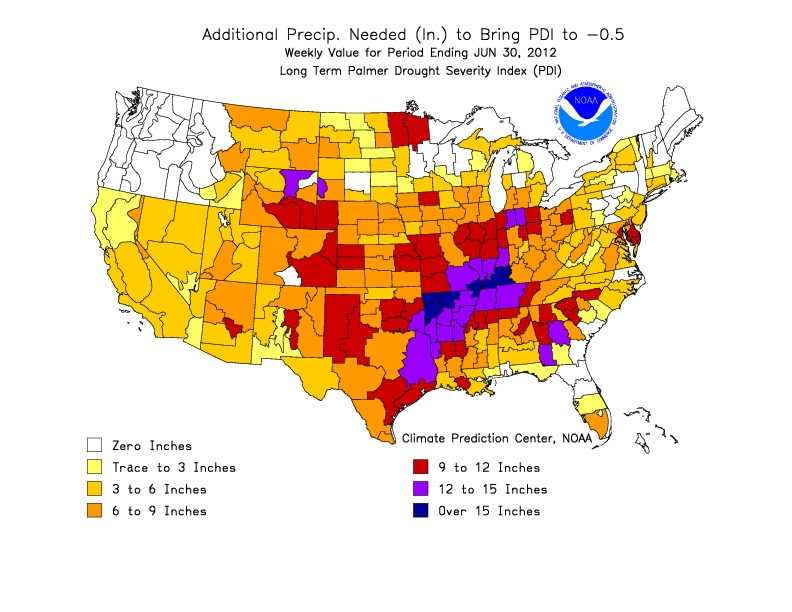Category: Hunting Blog
Scent Control: An Essential for Consistently Harvesting Mature Bucks
Last week I explained the importance of hunters reducing scent on them and their gear so they don’t alert mature bucks. This week I wished to share the system I use to accomplish this goal.
A good scent control system should reduce enough of the scent of a hunter and his gear so that bucks will approach the hunter close enough to allow for an ethical shot. It’s not just mature bucks that we need to worry about alerting. Spooking a doe or immature buck can alarm a mature buck enough that they won’t approach the area.
Given the wariness of most mature bucks and knowing that strange scents, or scents they associate with danger can cause them to go on high alert or change their path of travel, it’s critical that the scent reduction program covers gear and hunter from the time they go to their stand until they kill or exit the hunting area.
To accomplish this, Adam and I use the Dead Down Wind system. We wash our clothes with their soap. I use Dead Down Wind because it is enzyme based – not a bactericide. Dead bacteria often put off strong odors (ever smell a swamp?). I wish to break existing bacteria down and limit certain types of bacteria from growing on me and my gear.
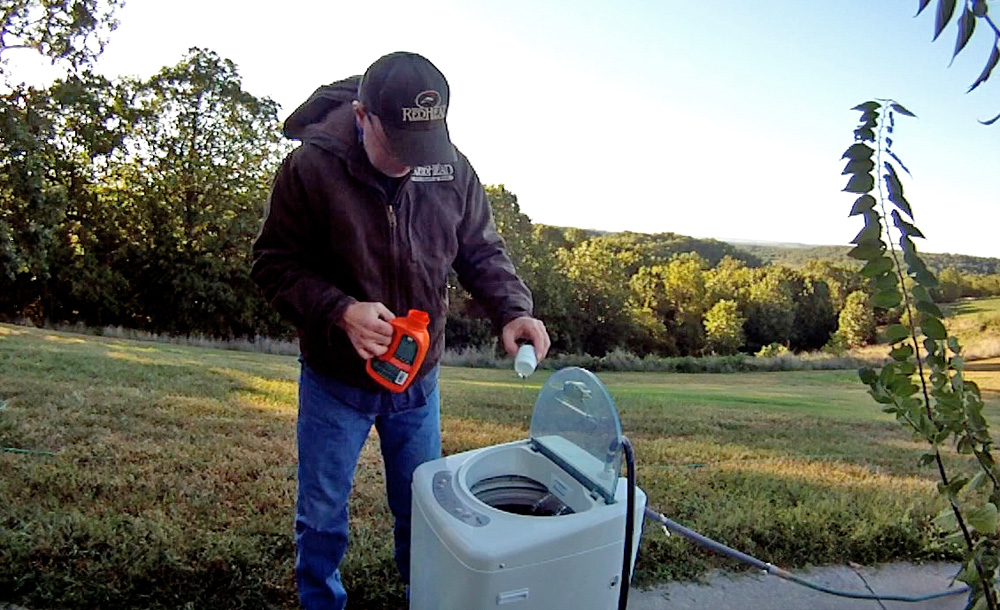
Doing laundry with Dead Down Wind ScentPrevent laundry detergent is an essential part of my scent reduction system
It doesn’t do much good to reduce the scent and odor causing agents on your body and then use a towel that is full of perfume, fabric softener, etc., which will simply apply a scent that is just as alarming to your body. Hence we buy some towels that are only used to dry ourselves when we are preparing to hunt. They are laundered, stored, etc. just like our hunting clothes.
Likewise, it does no good to remove odors from hunting clothes and then store them where they can absorb household and other smells that will alert deer. I prefer to air dry our clothes outside. If we are staying at a friend’s house we may use the dryer if there isn’t a place outside to air dry our clothes away from sources of odor (such as cars, lawn mowers, etc.).
Once our clothes are dry, we store them in a ScentMaster box. This clever device is a closed air system with a strong fan and air heater. It recirculates 130 degree air through the box and a large carbon filter. The warm air insures the clothes are totally dry and is not a friendly environment for smelly bacteria, mold, etc., to grow. This is a great method to store hunting clothes, and remove some odor that may have built up between hunts.
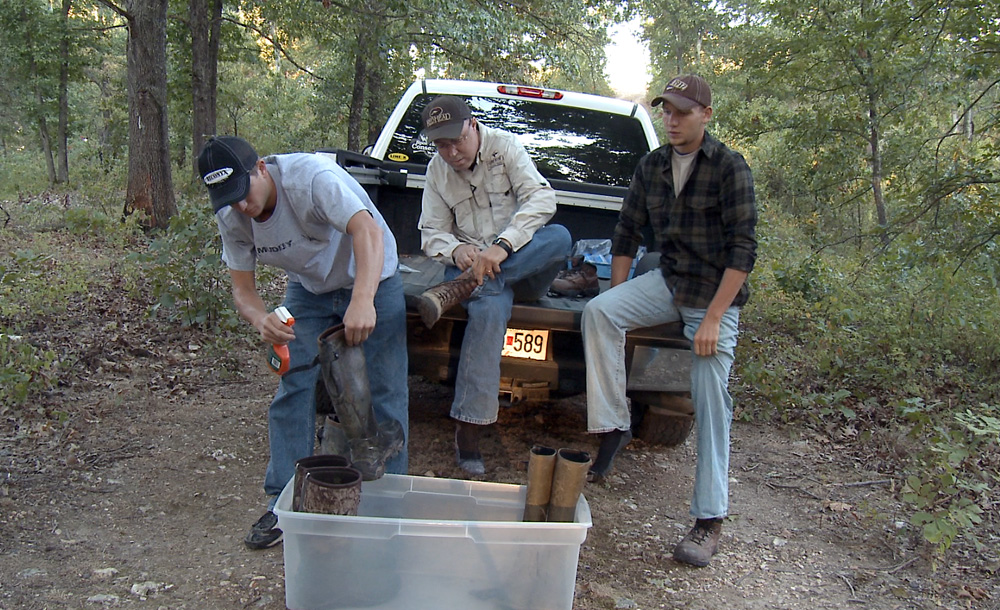
Applying Dead Down Wind ScentPrevent field spray before hunting leads to greater success at harvesting mature bucks
We’ll tote the ScentMaster box to our hunting location and change into our hunting clothes just before walking to our stand. Before we get dressed, we use the Dead Down Wind field spray to ensure our bodies, clothes, and gear are scent free as possible before heading to the stand. If we’ve been backpacking and/or camping we use the Dead Down Wind foam as an infield shower. The foam dries rapidly and is a great substitute for a shower.
Likewise we use the Field Spray to remove odors from our Nikon binos, range finders, etc.
Adam and I have filmed and killed several mature bucks while using our system of reducing scent. It’s certainly not fool proof. Such claims to the contrary are most likely false. But for most hunting situations, it’s proven to be very effective.
We produce a new episode each week – 52 weeks a year. We don’t have time to go on three hunts and only show the results of the best. You can see for yourself how well our scent reduction system works each week by simply watching GrowingDeer.tv.
Growing (and hunting) Deer together,
Grant
Why Scent Control Is Essential for Hunting Success
Unless you hunt in the desert, limiting the odor from you and your gear is one of the most important aspects of repeated success to harvesting mature bucks. Odor molecules travel better in moist air. Our dog, Crystal, can find sheds and follow blood trails much better when the humidity is higher. One time during a morning hunt I shot a doe high (GDTV 98). I tried to find the doe and lost the trail about noon. As the heat of the day increased the humidity dropped. Tracy, my wife, started Crystal on the trail from where I shot the deer. Crystal followed the trail as far as the blood was visible. Then she lost the trail.
We continued searching until late afternoon. Crystal wasn’t making any progress. All at once Crystal picked up the trail and I had my hands on the doe within minutes. What changed? The humidity increased as the air temperature dropped.
Ever wonder why bucks primarily move during the night, early morning, and to a lesser extent during the late afternoon? Look at the normal daily humidity pattern.
Given this, it’s extremely important to limit any odor possible. To accomplish this, I use a system for scent reduction. Not one magic product, but a system to reduce all odors from me and my gear. A bit of time spent on limiting odor can substantially increase deer hunting success rates!
Growing Deer together,
Grant
Preseason Preparations with a Giant Whitetail
It’s August the 23rd. I’m starting to have that feeling that can only be compared to the night before Christmas when I was a child. There wasn’t much sleep happening because the excitement was almost too much to bear. Plus, what little rest I did get was filled with dreams completely engulfed with new toys, stockings and reindeer. Years later I’m still dreaming about deer, but this time it is whitetails! Lately I’ve become so entangled with the upcoming season opener (September 15th) that I can’t even go to sleep without thinking about it. The good news is, I’m not alone. In fact, just this week Grant shared with me that he has started his usual preseason dreams about hunting whitetails. This is something that is often true with deer hunters.
To make this problem worse, last week I received a photo from a close friend of mine with a GIANT buck he had seen standing alongside the road in Missouri. At first glance, you’ll probably do the same thing I did and assume it is a fake or in a pen. After some questioning, I finally came to believe his story. Check it out!
Did you notice the second buck standing behind that monster? At first I overlooked him. That buck isn’t too shabby either. He was just dwarfed because he was standing next to a GIANT! Out of respect for the landowners and hunters in that area I won’t give any specifics. This definitely gets me pumped for deer season.
Even with all this talk of deer season we’re still continuing to manage the wildlife habitat here at The Proving Grounds. This week we had a little fun with a woodland/glade prescribed fire. With a “summer burn” or “late growing season burn” we are helping the wildlife by stimulating the future growth of forbs and killing the many small saplings that have tried to take over the glade. Our goal was to kill as many small saplings as possible while not killing any large, mature trees in the process. We safely accomplished our goal and now are planning our next fire for (hopefully) sometime next week.
It’s that time of year! Whether you’re out scouting fields for bucks or practicing prescribed fire keep your eyes peeled and a camera handy. If you see a buck like my friend, you don’t want to miss an opportunity for a photo! If you do capture a cool photo, and want to share it, head over to Facebook and post it! We would love to have our Facebook page covered with photos taken of giant whitetails so we all could dream together! With a little luck maybe those dreams could become reality for all of us!
Dreaming of Giant Whitetails together,
Adam
Warning: This blog contains information about prescribed fire which is a management tool for trained professionals using the appropriate tools for the situation.
Scouting for Mature Bucks, Pt. 2
- Determine if mature bucks are in the area
- Learn which mature bucks move more during daylight
- The locations of food, cover and water within their range
Those are good steps to patterning and harvesting a mature buck. However, stopping there doesn’t provide me enough information to locate a deer blind with confidence I’ll be able to tag a mature buck. The final two steps in my scouting process include:
- Which habitat features (food, cover, and water) are most huntable under specific conditions
- Characteristics of targeted bucks
There are rarely large gaps in a mature buck’s survival strategy. Therefore my hunting strategy is to position myself at the right place and time to be able to take advantage of the few weaknesses in a mature buck’s plan to survive.
Deer need food, cover, and water daily. However, mature bucks often use the cover of darkness or areas where the wind swirls (is in their favor from all directions) during daylight hours to use these resources. Rather than simply hunt the sources of food, cover, or water within an area a mature buck is known to use, I determine which of these resources allows me to approach, hunt, and leave without alerting deer. Mature bucks primarily use large feeding areas at night during the hunting season on most properties. The more limited the food source (late winter, etc.) the more likely a mature buck will use it during shooting hours.
Deer spend more time using cover during daylight hours than any other time! Many hunters rarely hunt cover, but it’s my preferred resource to hunt. I wish to hunt where the deer are! I prefer cover that’s on an opposing slope when hunting with a gun. This allows me to see into the cover from a distance. This was the perfect strategy during the 2011 Missouri gun opener. I rarely hunt directly
in cover during archery season. Patches of cover should be much larger than bow range (even for an Olympic archer). Hence, I prefer to hunt travel corridors very close to cover during the morning. I can get close to cover before daylight with much certainty that the bucks will be out roaming. I approach the travel corridor, hugging the cover so I don’t alert deer that are feeding, etc. close to the cover. I spend the morning waiting on deer to return to the cover. This was a very successful strategy for me when I saw Clean 12 at Three Yards last fall!
Once these stand locations are found, I target bucks that have showed signs of being aggressive or bullies. These are bucks that dominate feed or Trophy Rock sites! Such bucks are probably more likely to respond to grunt calls, rattling, or decoys. It’s easier to attract a bully than a buck that simply wants to slide by without causing a fight.
By using these five steps, I’ve been able to pattern and harvest multiple mature bucks. I suspect if you will give them a try, you’ll have an opportunity to tag a mature buck this fall!
Growing (and hunting) Deer together,
Grant
Split Brow During Daylight
It’s August 10 and The GrowingDeer.tv Team and I are attending the Land and Wildlife Expo and QDMA National Convention here at the beautiful Gaylord Opryland Resort in Nashville, Tennessee.
It’s been a fun couple of days in seminars, touring the indoor expo and meeting the GrowingDeer.tv fans. With all the activities and excitement going on, one thing hasn’t escaped my mind. Wednesday morning before we left for Nashville, Grant and I were going through Reconyx cards and we discovered that Split Brow has been frequently using a camera survey location DURING DAYLIGHT!! These are the first images of Split Brow during daylight hours. Even better, he’s present multiple days, morning and evening, all during daylight. If any of you follow Grant on Facebook you may already know that Split Brow had an eye punctured during November of 2011. So now I find myself wondering: Has age and injury made Split Brow more susceptible to harvest? I HOPE SO! Because he has been nothing but a ghost in years past! One thing is for certain, it’s that time of year to be fine tuning your bow, treestands, and preparing your camouflage so when that big buck makes his appearance under your stand you’re 100% confident.
Grant will continue with the part two of Scouting for Mature Bucks next week!
Dreaming of Giant Whitetails together,
Adam
Scouting for Mature Bucks, Pt. 1
There are five bits of information I strive to get starting now and throughout deer season that helps me pattern and harvest mature white-tailed bucks. These include:
- Determining if mature bucks are in the area
- Learning which mature bucks move more during daylight
- The locations of food, cover and water within their range
- Which habitat features (food, cover, and water) are most huntable under specific conditions
- Characteristics of targeted bucks
I’ll share my thoughts on the first three of these today and finish part 2 next week.
Scout to determine if mature bucks are in the area: The first step to harvesting a mature buck is hunting where mature bucks live. I don’t mean hunting in Kansas because it produces mature bucks annually. I mean hunting within the range of one or more mature bucks. To be more specific, I mean having stands/blinds in an area where a mature buck is active during hunting season. Seeing mature bucks in a bean field that’s recently been harvested will likely result in the hunter having plenty of time to read. This is especially true if a more preferred food source (standing beans, etc.) occurs within that buck’s home range during the remainder of hunting season.
Learning which mature bucks move more during daylight: Seeing or getting a Reconyx image of a mature buck is always a thrill. However getting multiple pictures of a mature buck during daylight is much better. Bucks have unique personalities. Finding bucks that tend to move during daylight hours is a huge step toward locating harvestable mature bucks! Gads of studies using GPS collars, etc., have conclusively shown that most mature bucks move more at night. Finding the buck that shows a trend of being active during daylight in an area where you have permission to hunt is a HUGE step toward harvesting that deer.
The locations of food, cover, water within their range: Most stands will be located near food, cover, or water. These are necessary components of habitat for a deer to survive. Knowing where each of these habitat components is located and which one the buck frequents the most during daylight is critical for stand placement. I often don’t place a stand directly overlooking food, cover, or water. Rather I place my stand in areas where I believe the buck is traveling to one of these critical types of habitat. Mature bucks will often reach these destinations just at or during dark. By selecting a stand location along his travel route, I’ve increased my odds of seeing him during legal shooting hours.
If the buck is using more than one source of food, cover, and water during daylight, there’s an even more important factor that will determine my stand location. I’ll share that next week.
It’s almost deer season! Let the serious scouting for 2012 begin!
Growing (and hunting) Deer together,
Grant
Antlers Stop Growing
Deer season opens in the coastal counties of South Carolina August 15, 2012. Other states, such as Kentucky, open their seasons while many bucks are still in velvet. This leads to many questions including, “About how long before a buck sheds his velvet are his antlers finished growing?”
Generally speaking, bucks stop adding inches to their antlers about three weeks more or less prior to shedding their velvet. However, just as important is the rate of antler growth while bucks are in velvet. In general (depending on location and quality of food available) new antler growth begins as soon as the previous set is shed. They continue to grow through early to mid August. At this time the antlers are still covered with velvet, but begin mineralizing (hardening) and not adding additional size.
This means we can observe or get images of bucks during mid August and know about how large of antlers a buck will produce. I typically estimate their score and then reduce my estimate by 20% to compensate for the removal of velvet.
This year some bucks won’t add many inches during August due to the drought. Protein is a big component of antlers. Plants experiencing severe drought stress have very low protein levels. Deer are not able to store protein like they do energy (in the form of fat) or some minerals (in their skeletal system). Hence, if protein is in short supply it has a direct impact on antler growth.
Unless deer have access to supplemental feed, protein is in short supply throughout the area impacted by the current drought. Average antler size will likely be smaller this year compared to most years in the drought-impacted areas. These cycles come and go. It’s the overall health of the deer herd that concerns me the most as a biologist and as a hunter.
During normal years, hunters have a very good idea what the total antler size will be by mid August or so. This year, at least in areas experiencing extreme drought, hunters may know the antler size of bucks much earlier.
Growing (and watching) Deer together,
Grant
Deer and Silage Corn
Hunters that live in the Midwest and those that travel there each fall to hunt may need to change their strategies and/or stand locations this fall. This is because of corn – or the lack there of!
There are usually 90 + million acres of standing corn throughout the Midwest during the beginning of deer season. Standing corn provides both cover and food. In many areas, standing corn is the best cover for deer within their range. In addition, corn’s grain is good source of carbohydrates which deer aggressively seek during the fall. This is in part because deer are genetically programmed to store fat to survive winter.
Knowing this preference for corn has helped many hunters pattern mature bucks. Once the corn is harvested deer become easier to pattern as their available sanctuaries are limited and easy to locate. In addition, deer continue to return to the harvested corn fields seeking the grain spilled by the combine.
This cycle will not occur in many areas of the Midwest during the 2012 deer season. Due to the drought corn crops in many areas won’t produce a good yield. Many, many farmers are currently cutting their corn crops as silage in an effort to salvage what’s available before it withers away.
Unlike harvesting ripened corn, cutting corn for silage involves harvesting the entire stalk. There is no grain spilled as part of the harvest. This leaves no cover (not even enough stalks to hide a deer) and certainly no grain to attract deer. This will cause a major change of how and where deer use their home range. Some bottlenecks, travel corridors, etc. won’t be used by bucks as they have been in the past. Likewise, deer will use other portions of their range much more than during “normal” years.
This is not a year to simply assume that traditional stand locations are the best. This is a year to increase the amount of effort you scout in proportion to the magnitude of the change in food and cover availability at the location where you hunt. Like many farmers, you may have to change strategies to salvage your hunt this fall.
Growing (and hunting) Deer together,
Grant
Acorns and Patterning Bucks
I spend a bunch of time each year patterning bucks at The Proving Grounds. The largest factor that makes this job easy or difficult is the size of the acorn crop. Unfortunately (even with the drought) there is a very large acorn crop developing.
Whitetails in most areas have been eating acorns as long as there have been acorns. They obviously enjoy the taste of acorns as they often abandon soybeans, etc., as soon as acorns begin to fall. Patterning deer that are feeding on acorns can be easy if you hunt where oaks are somewhat rare or limited in distribution. This would include such areas as the edge of prairies, where most of the land is in crop production, etc. However, if you hunt near swamps, mountains, etc., where oaks are the most common type of land cover, you know patterning deer during years with large acorn crops can be very challenging.
When acorns are the primary food source, bucks can literally bed and eat within yards of each other for days at a time. It’s tough to approach and hunt deer that have very limited movement between food and cover. In addition, during years with large acorn crops bucks tend to feed on acorns throughout most of the deer season. Food plots can be very unproductive stand sites until very late during the season.
With this knowledge, I’m scouting and hanging stands that allow me to approach and leave locations of acorn producing oaks with the minimum disturbance to the area.
If you live in areas with lots of oaks, I suggest you start scouting for acorns now. By scouting the tops of trees you can determine the size of the acorn crop where you hunt. If you hunt in an area where oak trees are rare, this is an easy task and great hot spots can be found relatively easily! If you hunt in areas where oak trees are the dominate type of cover, get prepared mentally for a challenging hunting season.
Growing (and hunting) Deer together,
Grant
EHD and Drought
N.C.D.C. (National Climatic Data Center) released their drought outlook yesterday. It was literally and mentally not a pretty picture. Most of the whitetail’s range is predicted to experience a significant drought through September. This means antler and fawn development will probably not be as good as it could be in most areas. There will be exceptions with areas that irrigate or receive a timely rain. But most deer herds will suffer.
There are other impacts of drought stress on whitetails than the obvious reduction in forage, and therefore, herd quality. One of the worries I have when droughts occur is E.H.D. (epizootic hemorrhagic disease) and B.T. (bluetongue). These are both viruses but are genetically different. However, the signs and/or symptoms of both viruses can appear similar. In fact it requires samples and testing to confirm which virus is present in sick or dead deer. For more detailed information about EHD/BT, check out this fact sheet.
Unlike CWD, EHD/BT is not spread from deer to deer through direct contact. Rather it is transmitted from deer to deer by biting midges (called sand flies, gnats, no see ums, etc.). Research indicates that the scale of EDH/BT outbreaks is more closely related to the population levels of midges than deer. In other words, reducing the deer population probably won’t decrease the level of an EHD/BT outbreak.
Populations of the biting midges, and therefore EHD/BT outbreaks seem to explode when a drought has occurred resulting in lots of mud or moist soil being exposed. If rain occurs following such a drought, there is usually a huge hatch of the midges. Should widespread rain occur during sometime from July until it frosts, conditions could be perfect for a very large EHD/BT outbreak. Usually less than 25% of a deer herd dies during an EHD/BT outbreak, but there have certainly been cases where more than 50% of the herd dies.
There is no known vaccine, etc., to use for EHD/BT. Fortunately, EHD/BT is not infectious for humans.
I really want it to rain throughout the drought stricken area! However, I really don’t want it to remain dry until August and then rain. That could be a perfect recipe for a massive EHD/BT outbreak.
If you begin seeing deer that appear sick or finding sick and/or dead deer by water call your local wildlife biologist and/or game warden. They won’t be able to help the deer, but it will be very important to monitor the scale of the outbreak.
To end on a positive note, when a resource (food, cover, and water) is limited, it’s much easier to pattern deer. If conditions don’t change drastically before hunting season throughout most of the whitetail’s range, it may be one of the best hunting seasons for seeing deer that has occurred in a long time! I’m not hanging all my Muddy stands yet. I’m saving a few to place on whichever water source is available should the drought not end before hunting season begins.
Growing Deer together,
Grant



